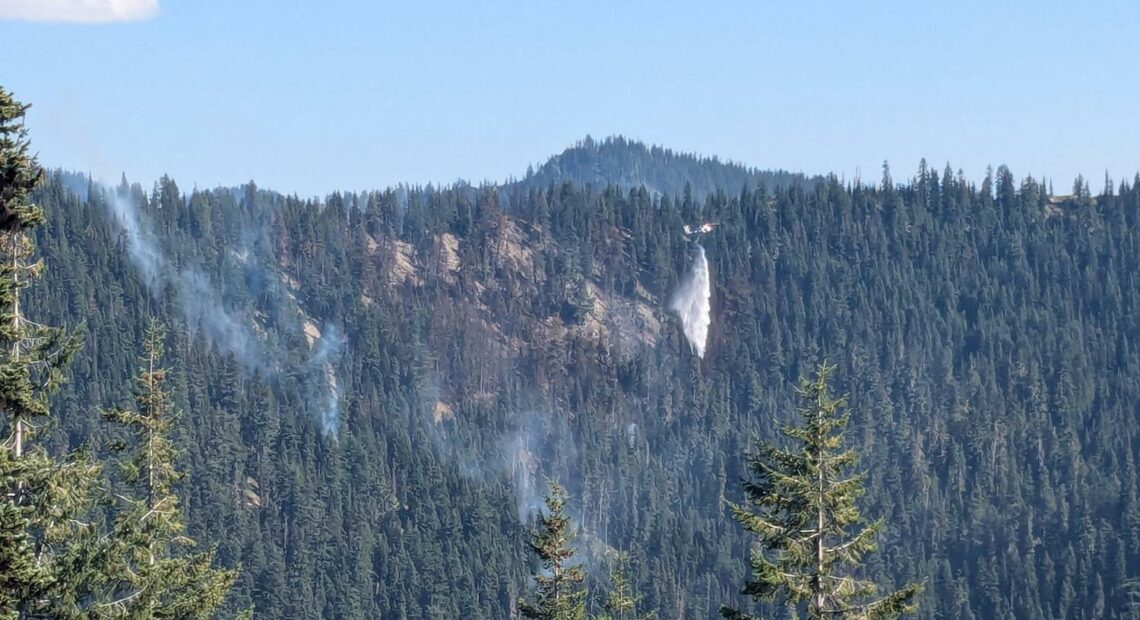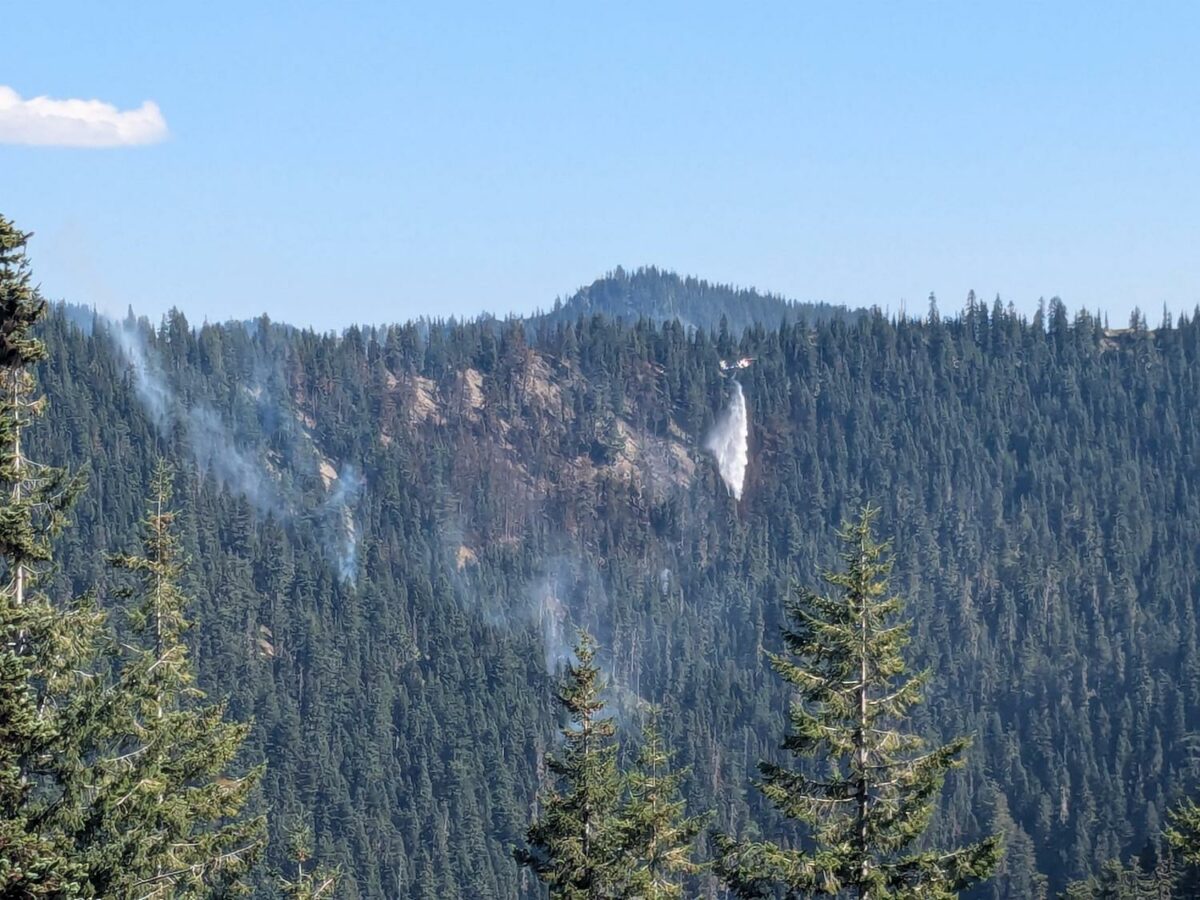
Aerial attacks help tamp down Washington fires this season, Oregon sees record-breaking year for acres burned
watch
Listen
(Runtime 1:03)
Read
For the first time this wildfire season, local firefighting agencies across Washington state were able to call in aerial resources from the Washington State Department of Natural Resources without having to wait crucial minutes to begin full suppression.
Thomas Kyle-Milward, communications manager with the DNR, said he’s heard from a number of sources how this has been helpful in getting a quick initial attack on fires.
“It’s been a huge success this year,” Kyle-Milward said.
The DNR deployed aircraft on 292 different fires this season.
That initial attack can help quench wildfires before they get big. The state has been able to keep about 95% of fires under 10 acres in years past, and Kyle-Milward anticipates that trend will hold this year.
“A lot of that initial attack success has been due to the fact that we are able to put aircraft on fires right away,” said Ryan Rodruck, another communications manager with the DNR.
The legislation that allows agencies to do this, House Bill 1498, passed unanimously in the 2023 session. Prior to its passing, agencies would have to wait for a state mobilization effort or create a mutual aid agreement between agencies to deploy DNR aerial resources. A report on how the bill has performed will be released later this year, Kyle-Milward said.
Washington state had an average wildfire year, hovering over 270,000 acres burned, more than last year, but with less fire ignitions than 2023. The number of acres burned is typical for the state nowadays, Kyle-Milward said. This year had the fifth fewest number of acres burned in the past decade.
The Pioneer fire in Chelan County contributed a lot of acreage to the total for Washington this year. That fire is still burning and has consumed almost 39,000 acres.
Oregon had a record-breaking fire year; almost 2 million acres burned there this year. That’s the most for the state in modern history, dating back to the early 1990s.
Jamie Knight, the aviation operations specialist for the Oregon Department of Forestry, said when there are multiple large fires burning at the same time, as was the case this summer, resources get stretched thin.
“There’s only so many air tankers,” Knight said. “There’s only so many helicopters that are geared and trained and carded to do the work that we’re asking them to do.”
Going forward, Joy Krawczyk, the public affairs director for the Oregon Department of Forestry, said there will need to be continued financial investment to keep up with growing needs as the wildfire situation continues to intensify.
















